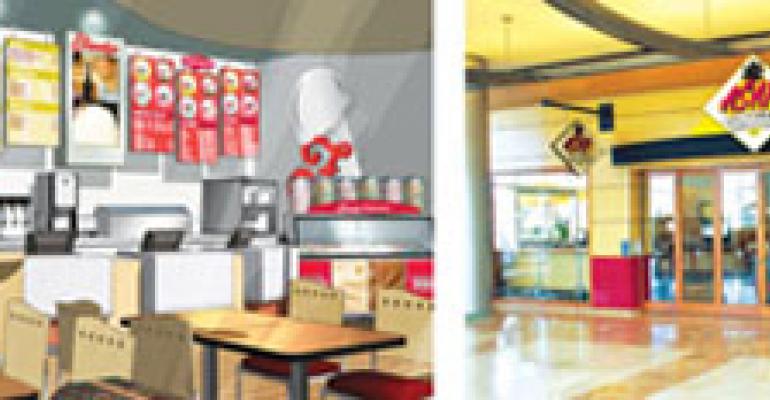While several full-service dining chains have offered smaller and fast-casual versions of their concepts for a decade, more players looking to cut costs and expand their location options are starting to colonize the terrain.
Uno Chicago Grill late last year opened its Uno Due Go express units at the Dallas-Fort Worth International Airport, and Friendly Ice Cream Corp. of Wilbraham, Mass., in mid-December said it would test a fast-casual format beginning this year that reduces costs and expands the availability of possible locations for the family-dining brand.
Jim Sullivan, vice president of franchising and development for the 505-unit Friendly’s chain, said the express version would offer a reduced menu that focuses on the chain’s core items of burgers, sandwiches and ice cream.
“This will allow us to enter into alternative venues where our traditional stores may not be viable for today’s consumer,” Sullivan says.
They are joining full-service chains that have offered smaller versions of their concepts for some time. Among them, Chili’s Grill & Bar has Chili’s Too, and T.G.I. Friday’s offers downsized units for airports and other venues.
California Pizza Kitchen has more than 15 scaled-down units in airports and nine CPK ASAP units in California, Illinois and Hawaii, some with curbside service. Also, P.F. Chang’s China Bistro boasts more than 150 locations of its fast-casual Pei Wei Asian Diner concept.
Jay Goldstein, owner of Advance Foodservice Consulting in Dallas, says smaller, express-style units have a number of advantages for growth in a challenging economy.
“There are more available sites at lower lease rates, and the initial investment cost is lower,” he says. “It changes the market penetration model to include a greater number of units and allows concepts to generate greater sales out of each market.”
The smaller units also make a more effective use of established markets.
“This helps spread the cost of infrastructure and create greater efficiencies,” Goldstein says. “With a greater market penetration and higher total sales, the marketing dollars become more efficient and you can build much greater brand awareness.”
Express units also require less labor, Goldstein says, because table-service waiters are no longer needed.
“The labor model is significantly different,” he adds. “It provides franchisees more opportunities to grow in a market and makes the brand and business more valuable to them.”
In these tough economic times, the smaller express units also give consumers the look, feel and taste of a typical casual-dining experience at a generally lower price and without the added cost of tipping.
The units help retain customers, Goldstein said, because “there are now more units that are more convenient and accessible for the consumer.”
“Even though they may be trading down, consumers are still very much time-starved and are looking for convenience at every turn,” he says. “With lower investment costs and potentially a better labor model they can help to keep prices in line so that they are affordable more often for more consumers. They also help build brand awareness and keep the brand top of mind.”
The creation of a second tier of main-chain siblings is not without its challenges, however.
“The greatest challenge is thinking that these units are just like the big ones,” Goldstein says. “The smart companies have realized this.”
Those companies, he says, have:
Reduced the number of items on the menu, thereby reducing the amount of kitchen equipment, space and number of staff required. Modified the labor model to reflect the efficiencies of the building and the menu. Ensured “brand integrity,” by creating the core elements and quality of the full-scale concept but making it clear that the smaller unit is not going to provide all the services and menu of a full-scale version.
The smaller units are not for every full-service chain, Goldstein says.
“Just because you can do more of these units does not mean that you always should,” he says. “Some concepts became too dependent on the smaller units. Sometimes you may put one in a market that could have supported a full-size unit and as a consequence you lose sales opportunities. There needs to be very clear criteria developed to determine market potential to assist in market planning.”
Another possible pitfall from a franchisor’s perspective is that the smaller units will be more appealing than the typical version to investors.
“Franchisees will potentially want to build the less expensive units rather than invest in the full-size units,” Goldstein says. “To overcome this the franchisor needs to be specific in the development agreement how many of each unit the franchisee can build. Also, in the site-approval process the franchisor must ensure that the potential of the market is met.”





